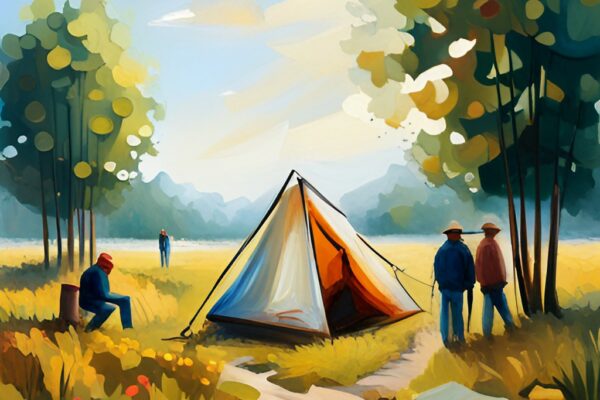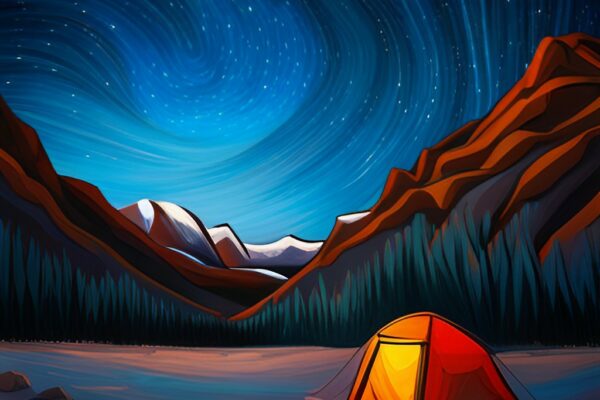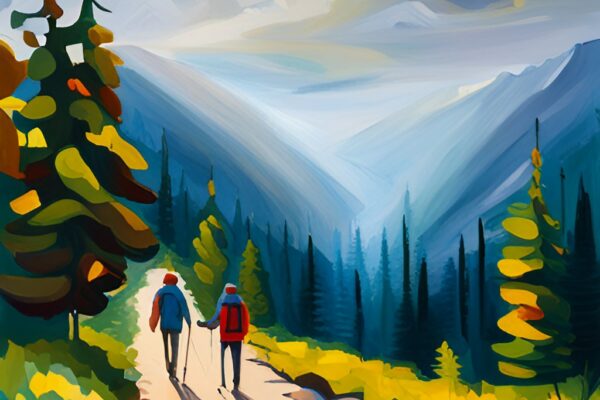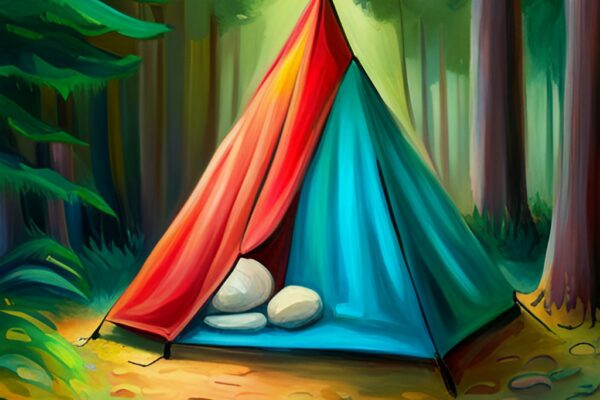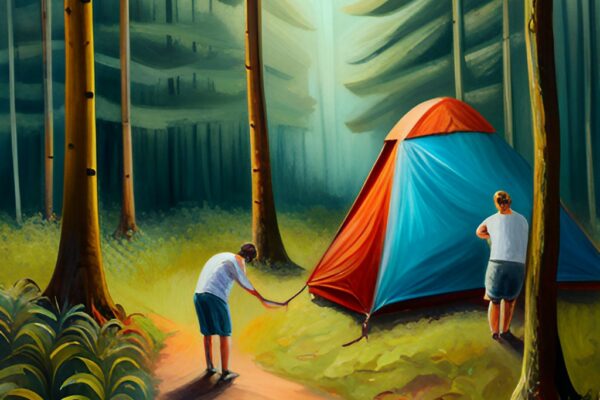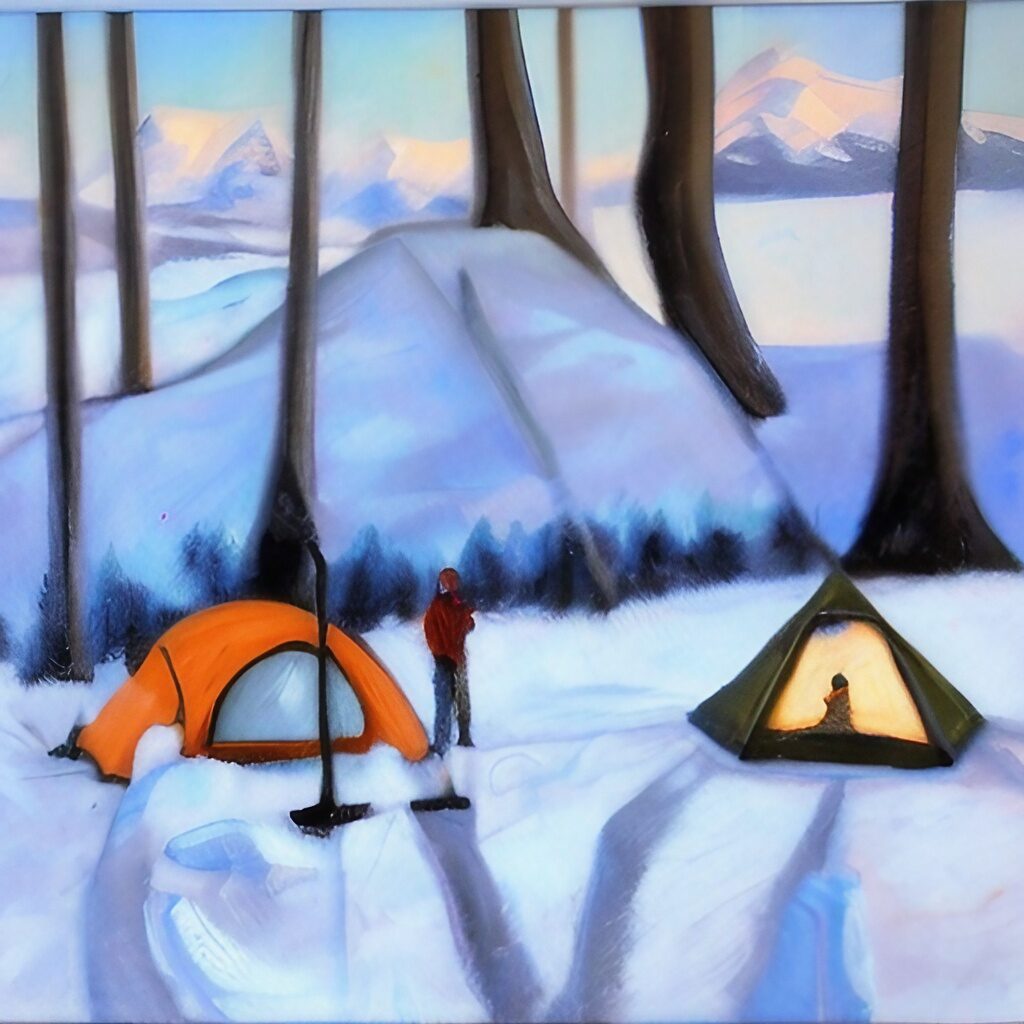
Our hats go off to you hardcore folks who enjoy winter camping. It’s certainly not an endeavor for the faint of heart!
To make sure you’re ready, we created this guide to walk you through the whole kit and kaboodle. From what to pack and wear, to a few helpful dos and don’ts, we cover all the essentials to make your winter camping trip a blast.
Overall, successfully camping in 30-degree weather comes down to your preparation. Pack the proper clothing and gear. Be sure to test everything somewhere close to home in similarly cold conditions. Finally, be sure you fuel up with nutritious, frequent meals while keeping an eye out for signs of potential hypothermia.
- What to Bring – Camping in 30-degree Weather
- What to Wear – Camping in 30-degree Weather
- Things to Do – Camping in 30-degree Weather
- Things NOT to Do – Camping in 30-degree Weather
- Signs of Hypothermia – Camping in 30-degree Weather
- Conclusion – Camping in 30-degree Weather
- Frequently Asked Questions – Camping in 30-degree Weather
What to Bring – Camping in 30-degree Weather
This is a short list of gear you’ll need that’s specific to cold-weather camping.
Notice that it does not include the gear you already should have with you. For instance, plenty of water, a backpack, a first aid kit, or food.
Tent – What to Bring
First, you’ll need a tent to protect you from the harsh elements. If you can get/afford one, a 4 season tent is ideal.
However, this becomes a must-have item if you’re camping somewhere that receives lots of snowfall or heavy winds. This is because standard 3-season tents will likely collapse under the weight of excessive snow.
But if you’re confident you won’t be dealing with extreme conditions, then a 3-season tent will be adequate.
Alternatively, have a look at the 8 best-insulated tents for some inspiration.
Whatever you end up choosing, look for a tent that has double walls. Single-wall tents will result in a lot of muggy condensation build-up.
As far as size goes, you’ll want to pack a shorter tent. Sorry, tall campers! See, tall tents allow heat to escape and take longer to warm up due to the extra space. So it’s really better to use a tent without excessive space.
Proper Cold Weather Sleeping Bag – What to Bring
For your sleeping bag, you’ll need something rated to 5-15 degrees.
Although that sounds like a simple directive, selecting a sleeping bag can get confusing.
This is because the rating printed on the bag states the minimum temperature at which the sleeping bag will keep you alive.
There’s a big difference between surviving the night and sleeping warmly and comfortably through it!
Sleeping Bag Liner (Optional) – What to Bring
Sleeping bag liners are thin bags that you place inside your main sleeping bag.
They add an extra layer of insulation and help trap warmth around your body.
Some campers find them too restricting while other campers swear by them. It all depends on your personal preference and how cold your bag is rated.
We polled campers about their thoughts on whether sleeping bag liners work if you’re interested in diving deeper.
Sleeping Pad – What to Bring
A liner may be optional, but a sleeping pad most certainly isn’t! No matter how warm your sleeping bag is, a sleeping pad is non-negotiable.
The ground is so, soooo cold, so you need something to insulate you from it.
As far as specific pads, we recommend an insulated pad if you can get one. Or at the very least, try to find a closed-cell foam pad.
If you want to learn more about sleeping bags and sleeping pads, we examine why they both are necessary.
Snowshoes or Spikes (Optional) – What to Bring
You don’t need to bring these if you’re car camping and don’t plan to stray far from camp.
But if you’re hiking in the snow for any distance, you’d better pack a pair of snowshoes or spikes. If not, then I hope you enjoy the feeling of uncontrollably downhill skiing!
Heater – What to Bring
A small portable camp heater warms up the inside of your tent – but always use it with supervision.
Additionally, heaters are great for outside the tent, specifically if there’s a fire ban and you’re not permitted to build an actual campfire.
Find your new heater as we examine the 10 best tent heaters to stay warm on freezing nights.
Thermos – What to Bring
If you brew up a hot cup of something, what good is it if your drink gets cold minutes after the pour?
That’s no fun. So bring along a thermos. This way, you can enjoy your hot drink for hours.
Yeah, you’ll thank us later.
Camp Stove – What to Bring
Camp stoves are good for preparing that aforementioned drink.
Sure, you could use a campfire, but camp stoves are highly portable and often super quick to boil water.
Charcoal Hand Warmers – What to Bring
These little things are lifesavers. I use charcoal hand warmers for skiing, hiking in the cold, or shoveling snow from my old driveway.
They get their name from their primary ingredient: activated charcoal. All you do is open them, exposing the packet to air.
Then you give them a shake and stick in your gloves. In a few minutes, sigh a sigh of warm bliss! You’ll be amazed at how hot they can get.
What to Wear – Camping in 30-degree Weather
Here’s a few articles of clothing that are pretty much required when camping in 30-degree weather.
Thermal Base Layer – What to Wear
The job of the base layer is to keep heat close to your body.
The specific clothes are up to you: it can be a onesie-style set of long underwear. Or it can be a long-sleeved shirt and leggings.
Wool or fleece are both great choices. Both these fabrics will keep you warm without making you sweat to death. And as an added perk, they’re soft as silk!
Mid Layer – What to Wear
The mid-layer keeps you warm but remains breathable. It builds upon the layer below by trapping heat without sacrificing breathability.
To give you an idea, a pair of fleece leggings are super comfy over your thermal layer.
For your top, I’d personally recommend Under Armour’s Cold Gear Mock. It feels weirdly (deceptively!) thin to the touch, but it’s kept me warm skiing down plenty of mountains.
Warm Socks – What to Wear
Warm, cozy socks might be one of the first things you think of when you envision staying warm in winter.
However, keep in mind there’s a balance between fluffy comfort and socks that are so fat that they pinch once you don your boots!
Medium Jacket or Hoodie – What to Wear
The jacket is rather straightforward. It can be a fancy, sporty pullover or just a casual hoodie.
Whatever it is….it just can’t be cotton.
Hardshell Jacket/Hardshell Snowpants – What to Wear
Your final layer should be a jacket and pants with a hard shell. The reason for the shell (which feels “crunchy” to the touch instead of soft) is to break the wind.
The shell also offers protection against water. So these two valuable characteristics makes a hardshell jacket the ideal layer for taking on the brunt of the elements.
Things to Do – Camping in 30-degree Weather
To make the most of your cold weather trip, let’s review a few good practices in the field.
Stay Close on Your First Trip – Things to Do
Even if you have extensive summer camping experience, test your new winter gear close to home. In your backyard, if possible!
See, regardless of your prior experience, winter camping is a whole different ball game. It’s different in terms of the conditions you’ll face and the type of gear you’ll use.
As such, you need to test it at home first to ensure your gear performs properly.
Eat… Constantly! – Things to Do
While you’re out there in the cold, you need to eat a lot. By this, we mean a good 3 meals (preferably hot meals) and plenty of snacks!
Obviously, food is your body’s fuel. So you’ll have an easier time staying warm if it’s being fueled up properly.
We suggest warm, stick-to-your-ribs type meals: oatmeal, hearty soups, and pasta.
Drape an Emergency Blanket Over Your Sleeping Bag – Things to Do
It gets cold at night, painfully so when you’re camping in 30-degree temperatures. Packing an emergency blanket for those wee hours of the morning can help fight the chill.
That said, don’t put the blanket directly on you, directly against your skin or the top layer of clothes. If you do, you’ll sweat like crazy. Take it from me, who made that mistake once and never again!
Instead, drape the blanket over your sleeping bag to provide added insulation.
Boil Water and Pack It Into Your Sleeping Bag for Added Warmth – Things to Do
If you’re still worried about staying warm at night, try this: boil water and place it in a very tightly sealed bottle. Then pack the bottle into your sleeping bag and crawl inside.
Ta-da! Instant, personal heater.
And if you’re still paranoid about staying warm, we wrote a guide with 41 tips for cold-weather camping.
Choose your Campsite Wisely – Things to Do
You may be surprised to hear that choosing a campsite can make or break a winter camping trip. This is because some spots will offer you better protection from the elements than others.
For instance, avoid open areas. Don’t try to camp in a wide-open field. The high winds will be killer!
Look instead for places with objects to block the wind. Keep a lookout for large bluffs of rocks or downed trees, all of which will make handy, natural lean-to’s.
Things NOT to Do – Camping in 30-degree Weather
Having gone over a few tips, let’s address a few things you shouldn’t do while winter camping.
No Cotton Allowed! – Things NOT to Do
Sure, cotton clothes may be comfy, but it doesn’t allow moisture to evaporate from the body. Instead, it traps it close to your skin, where it will chill you.
At best, this will feel uncomfortable and clammy. At worst, it could potentially be dangerous by inviting hypothermia.
Don’t Eat Snow – Things NOT to Do
As appealing as it looks, it’s not wise to eat snow.
Yes, you can melt it for water. But when you eat it straight, it cools your body’s core a lot faster than you may realize.
This too can potentially invite hypothermia.
Sleeping with a Heater On – Things NOT to Do
We get it – you’re camping in the bitter cold, and sleeping with the heater sounds soooo tempting.
I hate to break it to you, but just don’t do this. So many things can go wrong.
For instance, if it’s a gas heater and something goes awry, you could suffocate. This is especially true if the tent isn’t properly ventilated.
But aside from that, every heater is susceptible to causing a fire, gas or not. Thus, it’s best to leave them off.
To learn more about heater safety, check out our article, where we examine whether propane heaters are safe in tents.
Minimal to No Alcohol – Things NOT to Do
You can add this to alcohol’s long list of weird side effects: it constricts your blood vessels. And get this – sometimes you may feel warm during this process!
This results in getting cold much faster while thinking you’re at a comfortable temperature. Can you say ‘dangerous’??
Interestingly enough, the warming buzz doesn’t always happen. Instead, you might feel very cold, aching all over.
Long story short: alcohol sounds fun, but it can bring about some unintended consequences in cold weather.
Signs of Hypothermia – Camping in 30-degree Weather
Hypothermia is a serious condition caused by prolonged exposure to cold. Basically, your body is losing heat faster than it can maintain it.
It can range from concerning to an outright cause of death. So don’t mess around with this stuff.
In short, here’s a few things to keep a lookout for, either in yourself or your campmates:
- Uncontrollable shivering
- Confusion
- Feeling exhausted
- Clumsy/fumbling hands, loss of coordination
- Memory loss
- Slurred speech
If you notice any of these symptoms, leave immediately and seek medical treatment. This shouldn’t be an issue for car campers, or those camping in an easily accessible campground.
But when you’re deep in the backcountry, you’re beyond outside help. So you’ll have to warm up the affected person on your own.
Boil a pot of water and when it’s cooled slightly, sip it slowly. This will warm up your core from the inside.
You can also warm your core by piling on blankets or extra clothing. As an added bonus, hold a bottle of warm water close to your chest.
Finally, make sure you remove any wet clothes. This includes anything damp from sweat. Otherwise, the moisture will act as a chilling agent, further lowering your temperature.
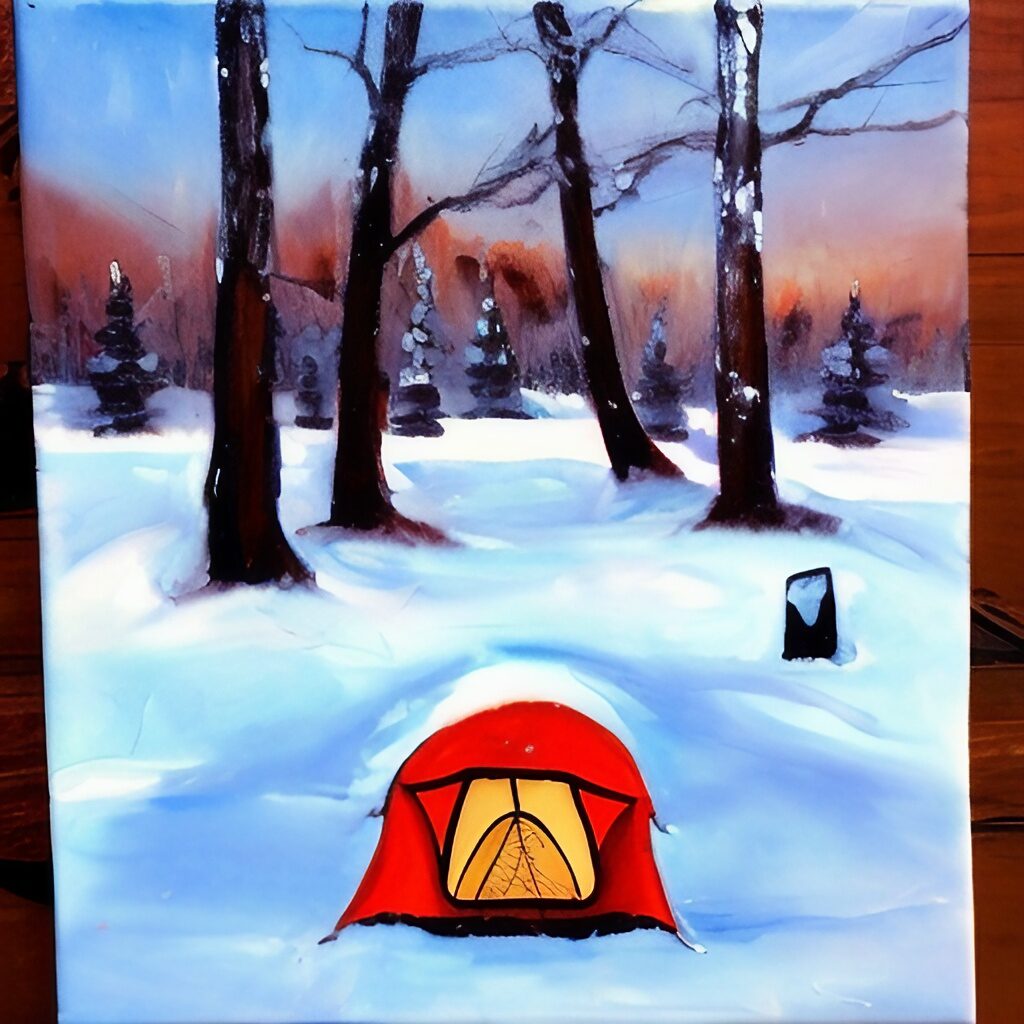
Conclusion – Camping in 30-degree Weather
As you can see, camping in 30-degree weather is much more involved than embarking on a summer trip.
But hopefully, you’ve also learned that you can have a successful adventure in extreme conditions as long as you adequately prepare.
Stay warm!
Frequently Asked Questions – Camping in 30-degree Weather
What are Some Things I Should Do Before a Winter Camping Trip? – FAQs
Listed below is a checklist of what you should do to prepare for a winter camping trip:
- Do some research on the upcoming weather and adjust your schedule accordingly.
- Before setting up camp, it’s a good idea to learn as much as possible about the area and the risks and difficulties that may be encountered there.
- Prepare for your trip by making a thorough inventory of your supplies and ensuring that your high-quality sleeping bag, tent, clothing layers, food, water, and emergency equipment like a first-aid kit and navigation tools are in good working order.
- Tell those you care about where you will be camping and when you expect to return.
- Extra warm layers, socks, hats, gloves/mittens, and shoes/boots are a must in case yours get wet or damaged.
- It’s a good idea to have all electronics, including phones and GPS trackers, fully charged before setting out.
- Bring along plenty of high-energy, lightweight snacks, like nuts or energy bars.
- Fire starters (matches/lighters), flares, and whistles are all good things to have on hand in case of an emergency.
- If you plan on driving to the campsite, make sure your car is in good working order.
- Before starting any fires for heat or cooking, be sure to review applicable local fire codes.
If you follow these guidelines and use your best common sense, you should have a pleasant and safe winter camping experience.
Can You Use Snow to Build an Emergency Shelter? – FAQs
There are several ways to use snow to construct an emergency shelter. Building a snow cave or snow trench shelter is one of the most common methods.
Here are some instructions for making a snow shelter out of snow:
- Locate an area with deep, compacted snow suitable for digging and shaping.
- Dig a large pile of snow out with your hands or a shovel.
- Allow at least an hour for the snow to settle before beginning to shape it into the desired structure.
- Begin shaping the snow pile by carving a tunnel into it to create an entryway.
- Carve and hollow out the inside of the snow pile until you have enough room to lie down comfortably.
- Smooth the tunnel’s walls and ceiling, and make ventilation holes near the top for fresh air circulation.
- As insulation, place branches or other natural materials on top of your shelter if possible.
Remember that building a proper emergency shelter out of snow takes knowledge and practice, so learn from experienced campers or survivalists before attempting it yourself in an emergency.
What are Some Emergency Essentials to Pack When Winter Camping? – FAQs
Here is a list of winter camping emergency supplies to bring:
- First-aid kit: Include bandages, gauze, antiseptic wipes, tweezers, and pain relievers in your first-aid kit.
- Tools for navigating: Bring a map and compass, or a GPS device, to help you navigate if you get lost.
- Emergency shelter: Bring a bivy sack or space blanket in case you need to spend the night outside of your tent.
- Fire starters: Bring multiple fire starters, such as waterproof matches, lighters, or fire-starting kits, to assist in starting fires for warmth and cooking.
- Extra food and water: Bring extra food and water in case of an emergency where you may be stranded for a longer period of time than expected.
- Whistle or signaling device: In an emergency, a whistle or other signaling device can help attract the attention of rescuers.
- Headlamp or flashlight with extra batteries: It gets dark early in the winter, so having a reliable light source is critical for safety and convenience.
- Multi-tool knife: A multi-tool knife is useful for a variety of tasks, including cutting rope and opening cans.
- Warm clothing layers: bring extra warm clothing layers such as thermal underwear, socks, hats, and gloves/mittens suitable for extremely cold conditions.
- Portable charger/power bank: Because cold temperatures quickly drain the batteries of electronic devices, having backup power sources to charge these devices is essential.
By packing these essential items, along with other necessary gear, for your winter camping trip, you’ll be better prepared to deal with any unexpected emergencies that may arise!




